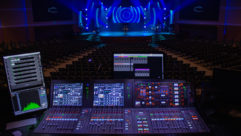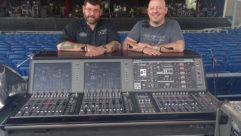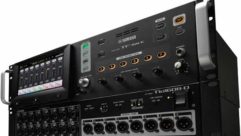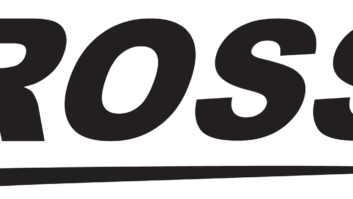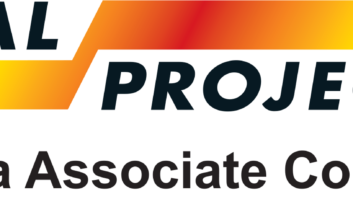
Yamaha LS9 Series
Aug 1, 2007 12:00 PM,
By John McJunkin
Portable digital mixers benefit from a strong pedigree.

In the course of my career, I have reviewed a couple of Yamaha Commercial Audio mixers — specifically the DM-1000 and M7CL — and I’ve also had my paws on PM1Ds, PM5Ds, and PM-series analog consoles, as well. They all feel like a Yamaha with an incredible array of powerful features, and the number of features obviously relates to price and level of sophistication.
I was excited to take a look at the LS9, Yamaha’s latest offering — smaller and very affordable. I was curious as to how many of the powerful features I’d come to know and love in Yamaha’s bigger, higher-dollar consoles would trickle down into the LS9, which comes in two versions: the LS9-16 and LS9-32. The former features 32 channels and 16 mic inputs, while the latter doubles those numbers.
I/O is a critical issue when considering consoles, and the LS9 provides a substantial amount of it. The LS9-16 has 16 mic inputs as mentioned previously, and eight omni outputs: double that with the LS9-32.
“Omni” is Yamaha’s nomenclature for a very flexible output that can represent essentially any output signal you’d like. For most applications, omni outputs one and two will represent your stereo mix, or one, two, and three can present an L-C-R mix. Stereo L and R default to the last two omni outputs of each console, which would be seven and eight in the LS9-16, and 15 and 16 in the LS9-32. In either scenario, you’re left with numerous outputs for any number of purposes, including stage monitoring, recording, or distribution to a 70V system, among other things.
In addition to this analog I/O, Yamaha includes a Mini-YGDAI card slot in the LS9-16 (there are two Mini-YGDAI card slots in the LS9-32) that enables additional analog or 24-bit digital I/O in several formats, including AES/EBU, ADAT, TDIF, CobraNet, and AuviTran EtherSound.
The LS9-16 I test-drove shipped with a TDIF card, which I was able to easily install and use. Both configurations of the console include back-panel word clock, S/PDIF, and MIDI I/O, in addition to a headphone output with a nice volume control on the front of the desk. One other I/O item: The console can be remotely controlled by Yamaha’s LS9 Editor software by virtue of an RJ-45 Ethernet connector, enabling connection to a computer or network.
The console’s user interface is an area in which Yamaha has really made some huge strides. The LS9-16 I played with had 17 motorized 100mm faders (the 17th being the stereo master), along with On, Select, and Cue buttons for each, and a six-segment LED meter. To the right of the faders resides the console’s 12 user-defined buttons and super-handy stereo input gain knobs. There are also On, Select, and Cue buttons for the stereo master and stereo inputs one and two, as well.
Those inputs have metering, but the much more substantial 32-segment LED meters located next to the console’s LCD screen represent the stereo bus. Display access, layer, and Mix/Matrix buttons reside to the left of the console’s 320×240 color LCD screen. To its right, you’ll find a clever group of knobs enabling control over head amp gain (which can be recalled), panning, a selected send, threshold levels for two dynamics processors, and four bands of parametric EQ. These knobs, as expected, simply affect the channel that’s currently selected by its Select button, and are very clever in my mind because they present the controls you’ll most likely want to use quickly without menu-diving.
To the far right of the console are navigation controls, in the same format used by Yamaha since time immemorial — up, down, left, right, Dec, and Inc buttons, and a data-entry wheel. Two other important buttons are located immediately below the stereo meters — Home and Cue Clear.
The Home key returns you from any edit screen to a screen that informatively summarizes the attributes of the currently selected channel. The Cue Clear button simply resets every cue button, eliminating the necessity to go layer diving to find which individual channel you’re hearing in your headphones. The LS9 lacks the powerful touchscreen the M7CL series features, but the LS9’s LCD screen is still easily navigable and provides a wealth of information. I did find myself wishing that I could control channel levels in the mix matrix with the faders, but the data-entry wheel was adequate. Aside from some of the console’s deep and sophisticated functions, the interface is intuitive and easily learned, facilitating easy mixing.
I really like one of the new Yamaha features — USB recording and playback. To the right of the navigation controls on the front panel is a USB slot into which you can plug USB memory. This facilitates high-resolution recording of whatever you’re mixing, playback of BGM prior to the event, etc. Very slick.
Other things that tickled me include really obvious layer buttons, which are going to be pressed frequently. The Home and Cue Clear buttons are also very prominently located because they’ll be frequently used. Another well-thought-out convention is the color-coding of the mix/matrix buttons and the fact that the LCD screen displays corresponding information with the same color — no mistaking which channels or paths you’re working on.
But does the console sound good? Absolutely. Yamaha uses great converters and has been well-known for strong signal processor development for decades. The console’s internal “racks” (accessible by a single-button push) grant access to a broad array of DSP, and much of Yamaha’s vintage style of processing is available (yes, even Symphonic), along with many new great-sounding programs.
The parametric EQs sound great and are useful, but the console also features graphic EQs, as well, with the main faders controlling boost or cut — very slick. The two dynamics processors on each channel can be used in a multitude of ways: as gate, compressor, or expander, or two possible combinations thereof — hard and soft companders. Effects gating, ducking, and de-essing are facilitated by internal side-chaining. This is very powerful — the console includes a lot of processing that would otherwise normally be done by rack equipment. This appeals to me immensely because I can just take the console now, and leave a big heavy rack of equipment back home.
Now let’s address the question I asked at the beginning of this review: How many of Yamaha’s exceptional features managed to trickle down from the bigger, costlier consoles to the LS9? To put it mildly, I was shocked. I’m not even sure if that word quite encompasses it. Yamaha has crammed a Promethean amount of power into a mixer that you can carry under your arm. Operationally, this little console feels like an M7CL, but it has a much smaller footprint. And considering that the LS9-32 model gives you 64 channels, the line of distinction between it and the M7CL gets pretty blurry.
The LS9 is a powerful console capable of a huge array of possibilities. And the level of quality is frankly incredible for consoles that cost $5,999 and $10,999 (LS9-16 and LS9-32, respectively). Digital live desks are getting really good and inexpensive, so I have to wonder how long analog live consoles can survive, considering their lack of recall, signal processing, and equivalent signal distribution capabilities.
We’re rapidly approaching a day that was promised long ago — a day in which we won’t have to devastate our budgets to acquire a powerful digital console. The Yamaha LS9 is the oracle announcing the arrival of that day.
PRODUCT SUMMARY
Company: Yamaha Commercial Audio
www.yamahaca.com
Product: LS9 series
Pros: Incredibly powerful for its size.
Cons: An M7CL-like touchscreen is just too much to ask for at this price.
Applications: Mixing, signal distribution, signal processing.
Price: $5,999 (LS9-16); $10,999 (LS9-32)
SPECIFICATIONS
Frequency response: 20Hz-20kHz
THD: 0.1% maximum
Noise: -67dBu (all faders up)
Dynamic range: 108dB typical
Crosstalk: -80dB (adjacent inputs)
Signal delay: Less than 2.5ms (input to omni output)
Sample frequencies: 44.1kHz/48kHz
Digital amplitude resolution: 24-bit
Dimensions: LS9-16: 18.9″×8.7″×19.7″;
LS9-32: 34.8″×8.7″×19.7″
Net weight: LS9-16: 26.5lbs.; LS9-32: 42.8lbs.
Power requirements: LS9-16: 95W, 110-240V, 50/60Hz; LS9-32: 170W, 110-240V, 50/60Hz
John McJunkinis the principal of Avalon Podcasting in Chandler, Ariz. He has consulted in the development of studios and installations and provides high-quality podcast production services.



